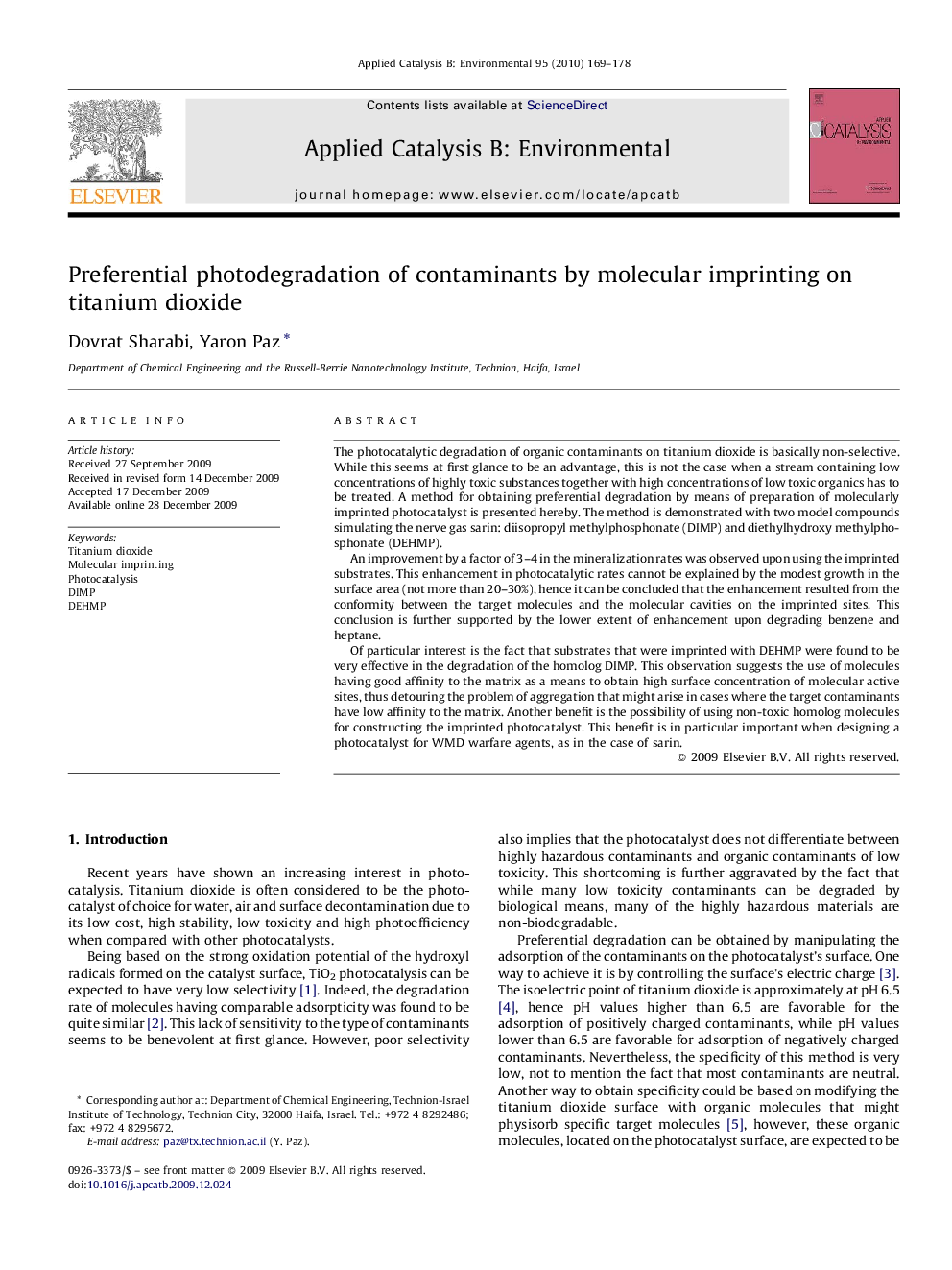| کد مقاله | کد نشریه | سال انتشار | مقاله انگلیسی | نسخه تمام متن |
|---|---|---|---|---|
| 47552 | 46475 | 2010 | 10 صفحه PDF | دانلود رایگان |

The photocatalytic degradation of organic contaminants on titanium dioxide is basically non-selective. While this seems at first glance to be an advantage, this is not the case when a stream containing low concentrations of highly toxic substances together with high concentrations of low toxic organics has to be treated. A method for obtaining preferential degradation by means of preparation of molecularly imprinted photocatalyst is presented hereby. The method is demonstrated with two model compounds simulating the nerve gas sarin: diisopropyl methylphosphonate (DIMP) and diethylhydroxy methylphosphonate (DEHMP).An improvement by a factor of 3–4 in the mineralization rates was observed upon using the imprinted substrates. This enhancement in photocatalytic rates cannot be explained by the modest growth in the surface area (not more than 20–30%), hence it can be concluded that the enhancement resulted from the conformity between the target molecules and the molecular cavities on the imprinted sites. This conclusion is further supported by the lower extent of enhancement upon degrading benzene and heptane.Of particular interest is the fact that substrates that were imprinted with DEHMP were found to be very effective in the degradation of the homolog DIMP. This observation suggests the use of molecules having good affinity to the matrix as a means to obtain high surface concentration of molecular active sites, thus detouring the problem of aggregation that might arise in cases where the target contaminants have low affinity to the matrix. Another benefit is the possibility of using non-toxic homolog molecules for constructing the imprinted photocatalyst. This benefit is in particular important when designing a photocatalyst for WMD warfare agents, as in the case of sarin.
Journal: Applied Catalysis B: Environmental - Volume 95, Issues 1–2, 12 March 2010, Pages 169–178